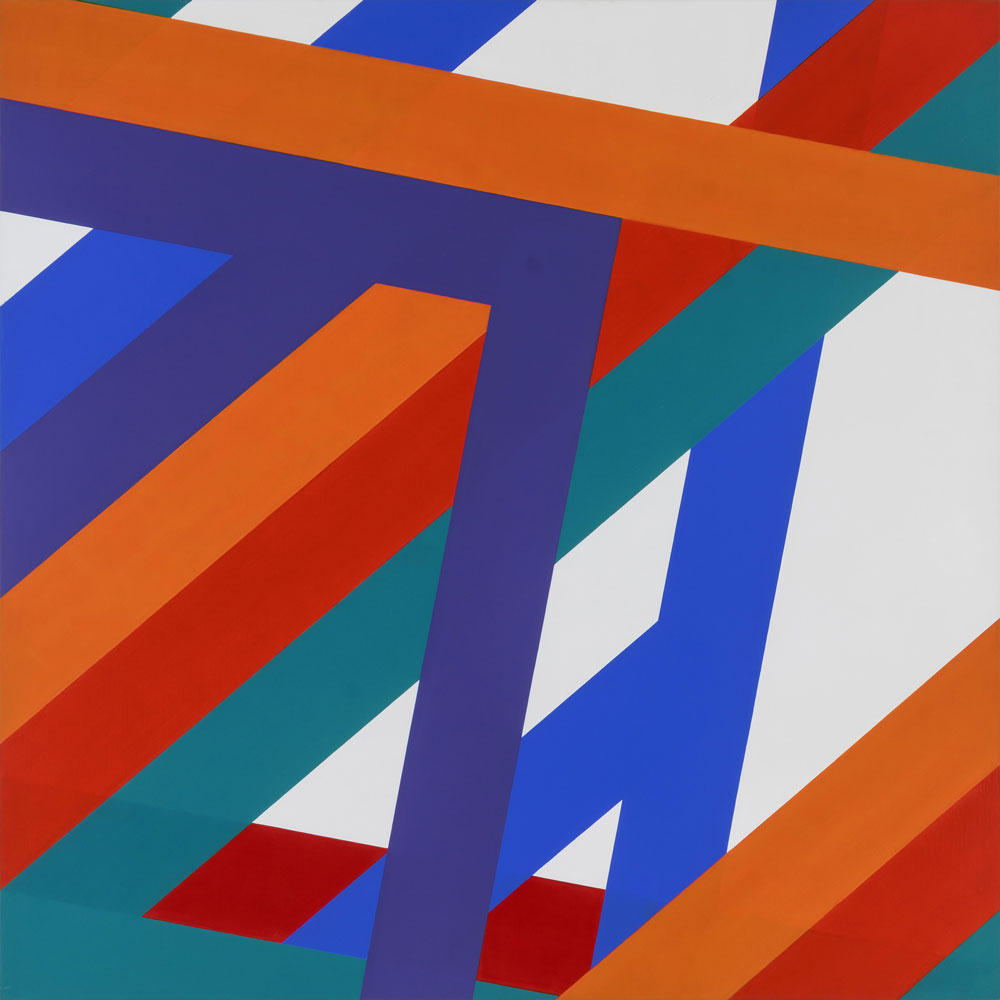ART-PRESENTATION:Dóra Maurer
 Dóra Maurer’s rigorous, conceptual work spans 50 years and incorporates painting, drawing, printmaking, photography and filmmaking. Also active as a curator and teacher, she is one of the most experimental artists to emerge from Eastern Europe during the past half a century. Tate Modern presents the work of Dóra Maurer in a year-long free exhibition that brings together 35 works from her conceptual photographic series and experimental films to her colorful graphic works and striking geometric paintings.
Dóra Maurer’s rigorous, conceptual work spans 50 years and incorporates painting, drawing, printmaking, photography and filmmaking. Also active as a curator and teacher, she is one of the most experimental artists to emerge from Eastern Europe during the past half a century. Tate Modern presents the work of Dóra Maurer in a year-long free exhibition that brings together 35 works from her conceptual photographic series and experimental films to her colorful graphic works and striking geometric paintings.
By Efi Michalarou
Photo: Tate Archive
Dóra Maurer emerged as part of a generation of neo-avant-garde Hungarian artists in the 1960s, pursuing highly experimental work in parallel to the ‘official’ art system of the socialist regime. As an artist, teacher and curator she developed an international network across Europe and became a hugely influential figure for younger artists. The innovative “Seven Foldings” (1975), for example, involved folding an aluminium printing plate seven times before taking an impression. She then moved towards conceptual photographic series and experimental filmmaking, often exploring abstract sequences and the analysis of everyday gestures. The exhibition showcases five of these films from the 1970s and 80s, including “Triolets” (1981) and “Timing” (1973/1980), which feature the repetition of activities, movements and rotations that have become characteristic of Maurer’s practice. Maurer’s radical work embraces indeterminacy, allowing multiple possibilities and interpretations, but it also focuses on the grammar of geometry and mathematical systems and methodologies. Her approach can alternate between process-based experiments and formal investigations of rule-based compositional logic, but is always characterised by a sense of movement and change. Although Maurer was affected by the political and social situation of communist Hungary, she was able to move with relative ease between Budapest and Vienna, straddling both the east and west. This was because in 1967 she had gained a scholarship to study in Vienna, and there she had met her husband, Tibor Gáyor, a Hungarian artist with Austrian citizenship. The 1970s were a key period in her development as an artist, when, after initially concentrating on printmaking, she started to produce conceptual photography, structural films and process-based drawing. Occasionally her works incorporated found or natural forms, as in “Schautafel 3” (1972), which is made from an organic mass of delicate twigs and dripped brown paint set against a simple geometric grid. The result of playful investigation, chance and freedom, her visually arresting and resolved work allows process to become visible, harnessing its experimental energy and force and the natural change of materials. The photographic series “Reversible and Changeable Phases of Movements” (1972), is described by Maurer as being “Minimal sequences of movement which I analysed and captured photographically”. Arranged in a grid formation, they record simple, repetitive actions such as throwing a ball or clenching and unclenching a fist, creating a story line of images that can be read both left to right and right to left. This emphasises the importance of photography and film as a mechanical means of recording human experience in a straightforward way, while also suggesting the possibility for continual renewal and a “self-made system”. Towards the end of the 1970s Maurer focused on “hidden structures”, making minimal pencil frottage drawings with geometrical shapes, where further traces or impressions were created by folding the paper in various different ways. “Hidden Structures 1-6” (1977-80), is made in this manner: a delicate, 6-part work on paper that uses both horizontal and diagonal folds as well as pencil rubbings to create its monochromatic, intricate, geometric composition. During the 1980s Maurer continued to explore geometric forms, looking at how they are affected by color and color perception. In these dynamic acrylic paintings on canvas laid on wood, she painted what appear to be overlaid or intersecting shapes in strong hues, creating a three-dimensional presence and sense of mobility. Elegant and seemingly lightweight, the paintings in fact exist on a single plane. They are not formed by any sculptural manipulation but by using colour to create the illusion of layering or the semblance of transparency, as if we were seeing one area of colour through another. These paintings are made from combinations ranging from two intersecting planes of colour, such as “Overlappings I” (1999), to complex compositions of three or more, as in the recent “IXEK” series made in 2015.
Info: Curator: Juliet Bingham, Tate Modern, Bankside, London, Duration: 5/8/19-24/1/21, Days & Hours: Daily 10:00-18:00 (All visitorsneed to book online in advance, www.tate.org.uk



Right: Dóra Maurer, Space Painting 1984-96, Silver print, gouache, 100 × 70 cm, Private collection, © Dóra Maurer Photo: Vintage Galéria / András Bozsó



Right: Dóra Maurer, Seven Twists V, 1979, printed 2011, Gelatin silver print on paper, 20.5 × 20.5 cm, Tate, © Dóra Maurer

